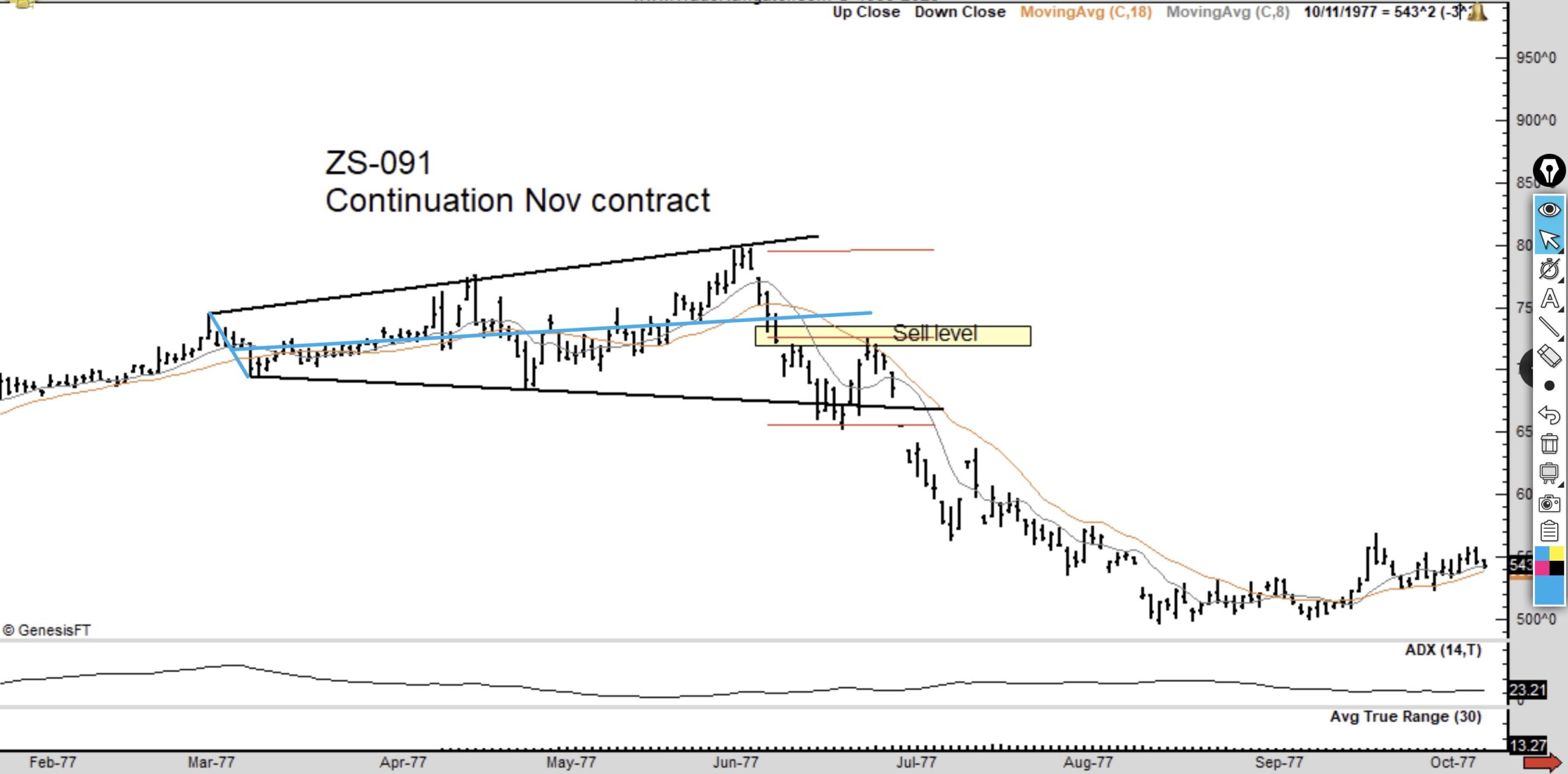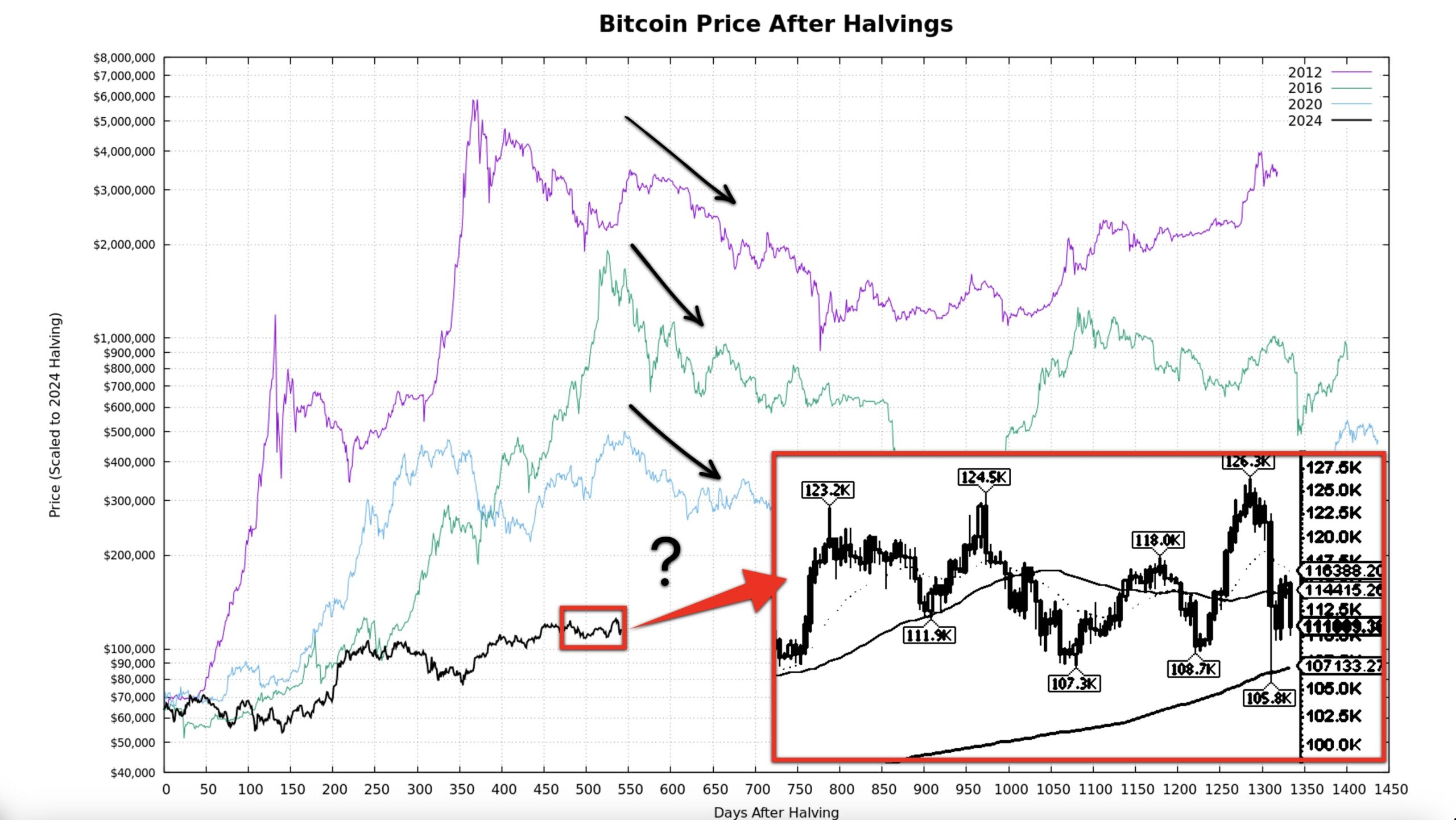Veteran Trader Peter Brandt Says “MSTR Could Go Underwater” If Bitcoin Repeats 1977 Soybean Crash

Highlights
- Veteran trader Peter Brandt compared Bitcoin’s current price structure to the 1977 soybean crash.
- Brandt noted that such a drop could leave MSTR deeply underwater.
- He balanced his outlook, suggesting Bitcoin could either rise to $250,000 or fall toward $60,000.
Peter Brandt has drawn a comparison between Bitcoin’s current price pattern and the 1977 soybean crash. The veteran trader suggested that if BTC were to follow the same pattern, Strategy’s stock, MSTR, could face deep losses.
Peter Brandt Draws Parallels Between Bitcoin and 1977 Soybeans
In a post on X, Peter Brandt noted that soybeans in 1977 formed a broadening top before plunging by 50%. This is a pattern he now sees unfolding in Bitcoin’s charts. He also shared that the MSTR stock could decline rapidly.
In 1977 Soybeans formed a broadening top and then declined 50% in value
Bitcoin today is forming a similar pattern. A 50% decline in $BTC will put $MSTR underwater
Whether I am right or wrong, you have to admit this old guy has the gonads to make big calls pic.twitter.com/f7Qi4J8WpN— Peter Brandt (@PeterLBrandt) October 21, 2025
The trader went on to caution that many investors take risk per trade, saying, “Anyone who bets 5% of their pot per trade will self-destruct. It’s just a question of time.” According to him, his analysis balances two opposing narratives. He stated that the coin will either climb to $250,000 or drop back toward $60,000.
However, another expert, TheMarketSniper, argued that while the chart patterns appear similar, the implications differ.

In a rare show of humility, Peter Brandt responded, acknowledging that both interpretations could hold merit. “I’ll be first to admit you could be right,” he replied. “If BTC goes up, I want to be long; if it goes down, I want to be short.”
This cautious tone comes after Brandt’s earlier bullish outlook. Just weeks ago, the veteran analyst had expressed confidence that Bitcoin, along with Ethereum, XRP, and Stellar (XLM), was still in an active bull phase. He backed his view with a chart showing that the coin’s broader bullish structure is still intact.
Now, however, his warning about a potential 50% decline suggests a more nuanced view. He shared that technical risks could test investor conviction, particularly for leveraged plays like MSTR.
Diverging Views as BTC Nears “Peak Zone”
Last week, market analyst Crypto₿irb warned that the Bitcoin bull run could be nearing exhaustion. His “Cycle Peak Countdown” model claims that the market is 99.3% through its current cycle, with a potential top arriving within days.

According to him, institutional profit-taking and cooling on-chain metrics point to a possible end-of-cycle pullback before the final euphoric leg.
At the same time, Binance founder Changpeng Zhao (CZ) has reignited the classic Bitcoin vs Gold debate. He predicted that the digital asset would eventually surpass gold’s $30 trillion valuation. In his words, “Prediction: Bitcoin will flip gold. I don’t know exactly when. Might take some time, but it will happen.”
Notably, experts have highlighted that a market rotation may be underway, with investors shifting capital from gold into BTC. This comes as gold saw its steepest single-day drop since 2013.
Peter Brandt’s caution is significant for Strategy (MSTR), which has more than 200,000 BTC on its balance sheet. A 50% drop in the coin could put pressure on the company’s leveraged strategy and drastically devalue its assets.
- Trust Wallet Hack: Users Hit as Hacker Drains BTC, ETH, BNB
- Binance Founder CZ Reacts as BNB Chain Dominates Ethereum, Solana In This Metric
- Mike Novogratz Credits XRP Army for Token’s Relevance as ETFs Maintain Inflow Streak
- Aave DAO Saga Update: Majority Votes Against Token Alignment Proposal as Voting Nears End
- Trump-Linked USD1 Stablecoin Crosses $3B Market Cap After Binance Rolls Out 20% Yield
- Bitcoin Price on Edge as $24B Options Expire on Boxing Day — Is $80K About to Crack?
- Crypto Market Rebounds: Are Bulls Positioning for a Santa Rally?
- XRP, Bitcoin, Ethereum Price Predictions Ahead of Jan 2026 CLARITY Act and US Crypto Reserve Plans
- Pi Network Analysis: Pi Coin Price Surges on Christmas Eve, Can It Hit Year-End Highs?
- Why Dec 26th Is A Do Or Die for Bitcoin Price Ahead Of Record Options Expiry?
- Why Bitcoin, Ethereum And XRP Prices Are Down Today? (24 Dec)

 Claim $500
Claim $500














